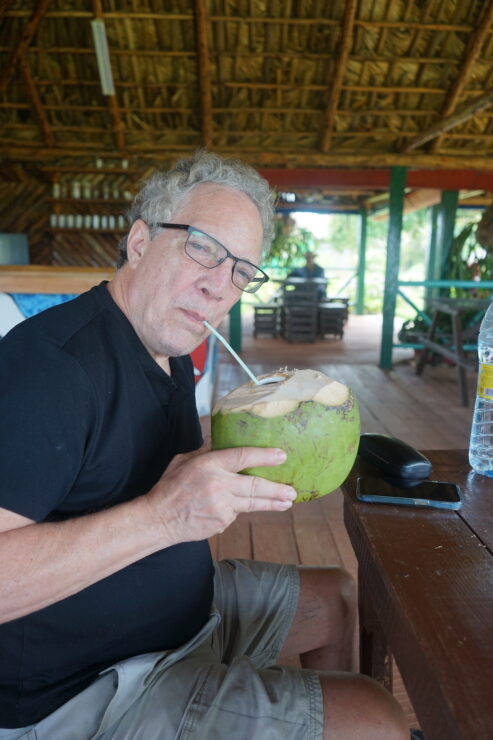Viñales Valley, located in Cuba’s Pinar del Río Province, is a UNESCO World Heritage Site. It is renowned for its stunning landscape, traditional agriculture, and rich cultural heritage. It’s a beautiful side trip for anyone visiting Cuba.
Unique mogotes characterize the valley — dome-shaped limestone hills that rise dramatically from the valley floor, creating a picturesque and serene environment. Traditional methods of agriculture have survived essentially unchanged on this plain for several centuries, particularly for growing tobacco and coffee.
Viñales Valley is a short trip from Trinidad, Cuba. Our tour guide, Ada Garcia with Intrepid Travel, arranged a bus for the trip. Among the highlights she showed us was the Prehistoric Mural in Viñales. The mural started in 1961, following the design of Leovigildo González Morillo, a student of the artist Diego Rivera.
The mural is 120 meters long, making it one of the biggest open-air paintings in the world. It took four years and the assistance of 20 farmers to complete. The farmers were not trained painters; they were local, hired farmers. Leovigildo used a loudspeaker to direct the farmers, who were suspended by ropes from the top of the hill while they applied the paint.
Watch as a tobacco farmer hand-rolls a cigar in the Viñales Valley, Cuba.
Today, Viñales is renowned for its tobacco and coffee plantations, where farmers continue to employ traditional cultivation and drying methods. Our guide, Ada, introduced us to both a coffee farm, The Orlando Family Farm, and a Tobacco Farm owned by Rayden Fonseca.
Visiting these farms offers insight into a simpler time, where things moved more slowly, and people took the time to farm using their hands and organic natural fertilizers and techniques. We learned, among other things, that different cigars came from different parts of the tobacco plant.
Stop at Restaurante los Senderos
While touring the Valley, be sure to stop at the Restaurante los Senderos. It sits in the center of the valley and offers a good place to rest while visiting. It’s an ideal place to smoke, enjoy a cup of coffee, sip a mixed drink made with rum, or drink coconut juice from a fresh coconut picked earlier that day.

If You Go
I travel to Cuba with Intrepid Travel. U.S. citizens are permitted to visit Cuba only under certain conditions. These include using a visa whose purpose is in “Support of the Cuban People.” I highly advise using a licensed travel agent or tour operator. They will have all the information you will need to apply for a visa.
If you’d like to plan a visit, here are the entry requirements for U.S. passport holders.
Money
Your U.S. credit cards are not accepted in Cuba. The U.S. has a banking embargo on Cuba.
The official exchange rate was 1 USD to 104 Cuban Pesos (CUP). The off-market rate was 300 – 320 CUP to 1 USD during my visit. I found it easier to pay in U.S. dollars and receive change in CUPs at the off-market rate. I would also recommend bringing lots of singles as easy tip money.
Note: Under a U.S. government rule, you’ll need to keep a complete record of where you go and who you talk to in Cuba. This rule is in effect for five years after you return to the U.S.
You may also enjoy reading:
Explore South Korea’s Seoraksan National Park
Vienna’s würstels, the timeless Austrian street food
See more of Dennis Cieri’s work here: Cieri Media

